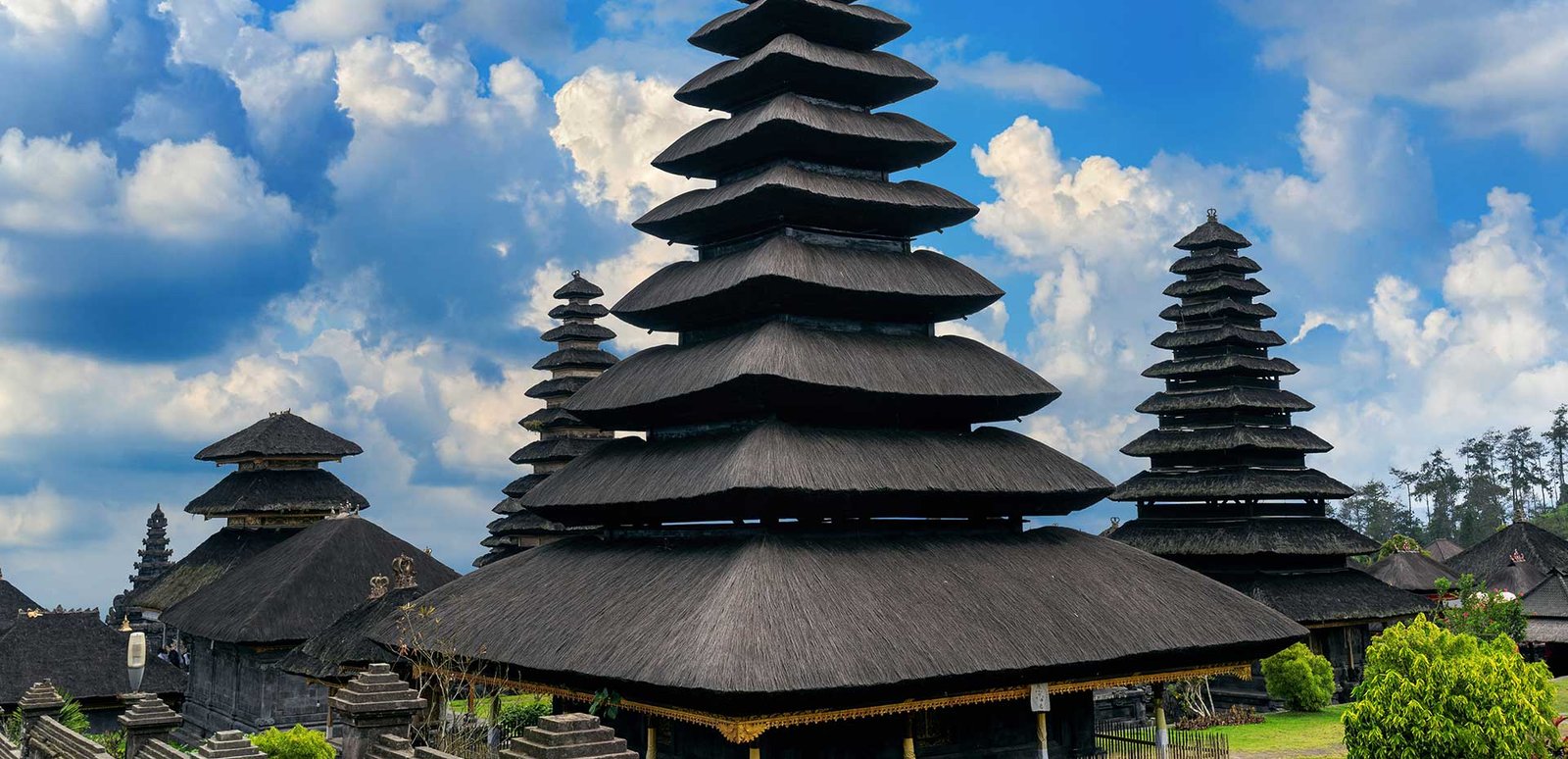Pura Besakih or Besakih Temple is a complex made up of twenty-three temples that sit on parallel ridges, located in Besakih Village, Rendang District, Karangasem Regency, Bali, Indonesia. It has stepped terraces and flights of stairs which ascend to a number of courtyards and brick gateways that in turn lead up to the main spire or Meru Structure, which is called Pura Penataran Agung. All this is aligned along a single axis and designed to lead the spiritual person upward and closer to the mountain which is considered sacred. It was certainly used as a Hindu place of worship from 1284 when the first Javanese conquerors settled in Bali. By the 15th century, Besakih had become a state temple of the powerful.
Besakih Temple is the largest temple on the island of Bali which is believed to be the Mother Earth Temple. The main temple has three Padmasana structures which are the origin or basic temple for the worship of Hindus called Tri Khayangan. Pura Tri Kahyangan etymologically comes from two words, namely “Kahyangan” which means holy place and Tri means three, and when combined it means three holy places.
Besakih Temple Complex
The Besakih Temple complex is arranged according to the cardinal directions. The term is Mandala which is manifested as the Five Gods. The first temple is Pura Gelap. This temple is a place of worship for the god Iswara in the east. Second, Pura Kiduling Kereteg on the south side which is a place of worship for the God Brahma.
On the west side, Ulun Kulkul Temple is a place of worship for God Mahadewa. Then, Batumadeg Temple in the north is a place of worship for Lord Vishnu. The largest temple is Pura Penataran Agung Besakih. The temple is considered the center of the mandala and worship of Lord Shiva.
With the belief that Hindus in Bali are the protectors of their territory, every village builds a Tri Khayangan temple, The names of the Three scattered temples are :
- Pura Desa or Pura Bale Agung, is a temple where Lord Brahma resides, which functions to create the universe.
- Puseh Temple, a place of worship or worship of Lord Vishnu in its function as the Preserver of the entire universe.
- Pura Dalem, a place to worship or worship Lord Shiva in the form of Goddess Durga which functions as a melting pot or pralina.
Tourist attraction
Pura Agung Besakih is well known to tourists as a religious tourism destination. Tourists can visit Besakih Temple to pray or just enjoy the temple complex. Tourists can also shop for knick-knacks and food at stalls around the temple complex.
Currently, the Directorate General of Human Settlements is arranging the Besakih Temple complex to anticipate an increase in the number of visitors during piodalan. Not only in the temple complex, the government is also adding a number of facilities such as a four-story parking building and construction of merchant kiosks which will be completed in March 2023.
Price of admission
To visit Besakih Temple, tourists will be charged IDR 30,000 for domestic tourists and IDR 60,000 for foreign tourists. Apart from that, visitors are also charged IDR 3,000 for motorbike parking and IDR 5,000 for cars.
Opening hours
Tourists can visit Besakih Temple from 08.00 – 18.00 WITA. However, Hindus who pray can enter the Besakih Temple area for 24 hours.
Map and Route to Besakih Temple
The journey from Denpasar to Besakih Temple can be taken in 1.5 hours. From Jalan Bypass Ngurah Rai, continue to Jalan Bypass Ida Bagus Mantra, then turn north towards Semarapura. If you depart from Semarapura, the trip to Besakih Temple will only take 44 minutes.
The distance from Besakih Temple to Penelokan Village Kintamani is around 18.3 km or around 36 minutes.
Please check our best tour packages near Besakih temple.


Comment (0)